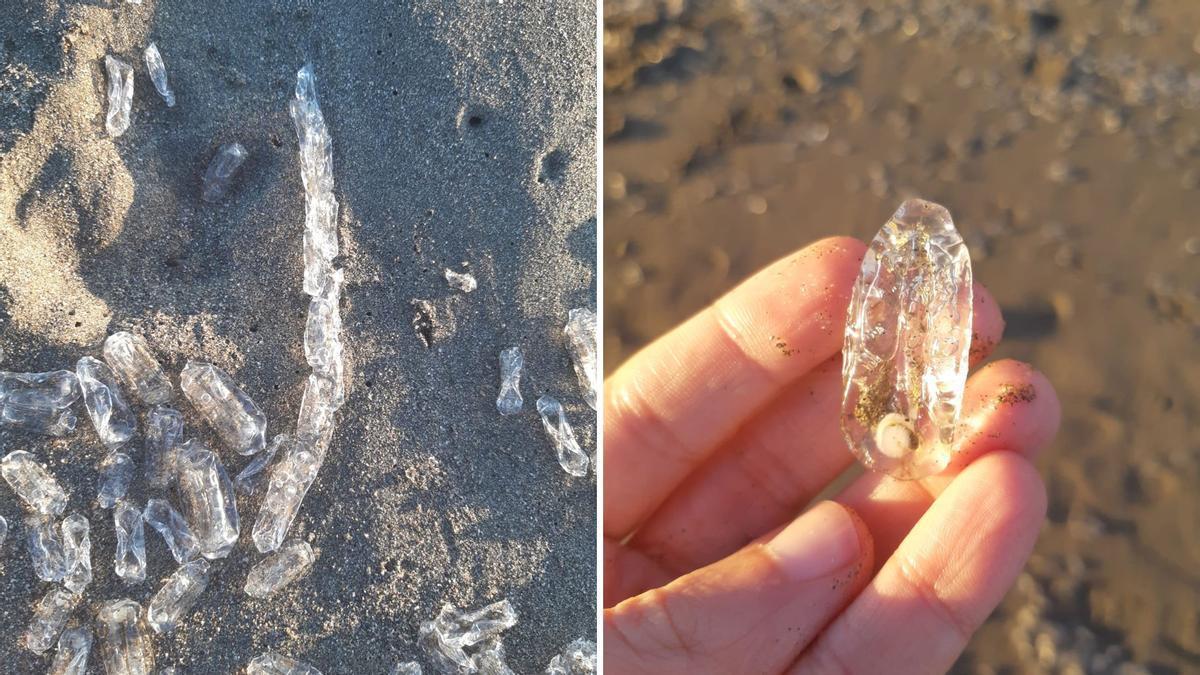In recent weeks, people from Malaga who have walked along the shores of Malaga’s beaches will have noticed the presence of a strange gelatinous organism in the sand.
They may seem microplastics that the sea has expelled, but nothing could be further from the truth. They have reached the coast of Malaga Salpas chains: “The species that has reached the beaches of Malaga is called Salpa fusiformis or common salpa”assures Juan Antonio López, president of the Mediterranean Sea Classroom Foundation
It is not the first time that these organisms appear on the Malaga coast: “In the last decade, there has been a significant proliferation on the coast of Malaga, Granada and Almería.”
Where these gelatinous organisms have been seen the most have been the beaches of “La Carihuela in Torremolinos, in Rincón de la Victoria,” says López. In addition to some beaches in the capital, as some Internet users have spread on the social network X.
But what are salps y what function do they fulfill in the marine ecosystem?
Characteristics
The salps are an invertebrate and marine organism, which has a gelatinous appearance, like jellyfish, although they differ in several ways.
These tunicate animals are hermaphrodites and They float freely singly or in extensive colonies. The term tunicates refers to the tough cellulose tunic that covers and protects these animals.
Some salp species can create chains up to 15 meters long.
These organisms feed on marine flora, microalgae and there are 59 species of salps, which They are found in all the seas of the world.
Its arrival to the coasts of Malaga is due to “a marine bloom”, which is due to various factors: “They are appearing at a time when it is not usual for them to be seen and this has to do with the climate change. The surface water is warmer than other years, in addition to the few rains that have been recorded,” says Juan Antonio López.
The salps move from vertical shape in the water column and they approach the surface during the night: “They are small and measure between one and five centimeters and have a gelatinous and transparent tunic. These invertebrates are “ancestors of vertebrate animals”they tell from the Aula del Mar.
Its appearance is confused with that of jellyfish, but “They have nothing to do with it”, as López explains. Salps lack tentacles and do not have their stinging cells: “The salps are harmless. They are not invasive species nor do they pose a problem for bathers nor for anyone.”
On the other hand, Juan Antonio warns that “It is not advisable to ingest them, since these red tides are usually poisonous.”
Clones
The ability of these organisms is that they can produce clones and this occurs when there is a lot of food. Their diet is based mainly on phytoplankton, microscopic algae that carry carbon, so they filter the water when they feed.
However, if the phytoplankton it’s too densesalps can get stuck and sink to the bottom.
Importance in the ecosystem
Salps are part of the marine ecosystem and carry out important work related to climate change; since they can capture carbon dioxide.
These invertebrates feed on phytoplankton, their colonies They are capable of capturing 4,000 tons of CO2 every night and accumulate it in the sea.
Hence, they clean the air and they play an important role in carbon capture in the ocean and in the biodiversity of the seas.
